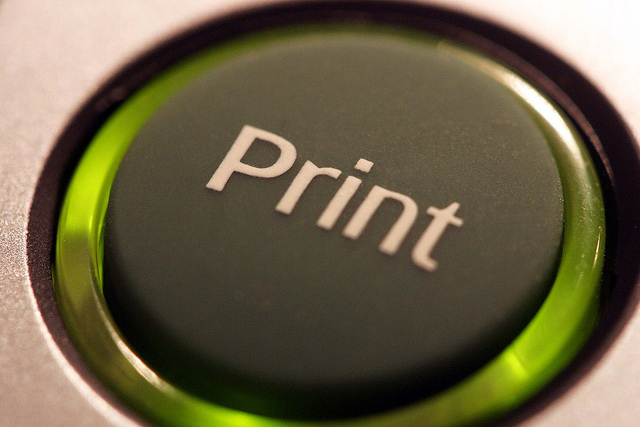
Emerging technologies often prompt fanciful and erroneous predictions, such as personal jetpacks, flying cars and even houses made of plastic. Nevertheless it’s difficult to understate the transformative impact that additive manufacturing—where a digital design file instructs a machine to create layers of materials until a three-dimensional structure is formed—may have upon the world. The sequential-layering process resembles a printer laying down successive lines of ink (hence the moniker ‘3D printing’) and can manipulate a variety of materials including metal, rubber, plastic, ceramics and even organic matter. As the technology matures, novel innovations are surfacing—including in the defence applications arena.
Though these developments are exciting, it can be easy to get carried away. Claims that 3D printing can make virtually anything at the push of a button, or that it will replace traditional factory production and international supply chains, should be handled with care. There are significant technical, economic and learning effect barriers to overcome before every household becomes their own manufacturer extraordinaire. For now, 3D printing will complement conventional manufacturing, such as injection molding and machining, rather than supplant it. Nonetheless there’s significant potential for the defence industry, particularly in logistics and procurement.
3D printing works best in situations demanding customised output—like medical devices designed around a patient’s anatomy and replacement parts for obsolete systems. Defence supply systems also face similar challenges in procuring bespoke solutions. When the ADF deploys to remote and dangerous environments, logistical operations can be time-consuming and inefficient. A contingent in a distant theatre might wait weeks or months to replace items, typically minor parts or obsolete equipment. As US Marines have demonstrated, 3D printing can reduce that timeframe to a matter of days for some items. Rapid prototyping allows the user to create cheap models in situ to test for fit and function, followed by a final design output. By compressing the supply system and moving it closer afield, 3D printing can reduce the risks to deployed forces and improve the ADF’s ability to sustain them. An increasingly digitised supply chain offers adversaries fewer physical targets to attack and speeds up supply delivery to frontline forces. On the downside this creates new cyber-threats with the potential of forward deployed 3D printers being hijacked or the tampering of CAD files.
Cost reduction is another advantage, which American sailors have realised in printing replacement clasps for broken radio equipment. The official clasps cost US$615, while the printed version is six cents per unit. Over three months the US Navy saved US$12,000. And it’s not just replacement parts that bring forth the cost savings. The US Navy has printed a manual primary globe valve designed to be taken apart and reassembled. This training tool for naval mechanics and engineers was printed for just US$500, which sure beats its usual US$50,000 price tag.
As militaries operate unique platforms and systems, many components and parts aren’t standardised and subject to mass production. Absent scale-driven manufacturing processes, diseconomies of scale drive up per-unit costs on small production runs. Compounding this is the Western approach to military procurement that’s drifted towards complex and expensive single platform programs. That well-documented trend further drives up acquisition and maintenance costs, putting pressure on defence budgets. Soon the ADF will acquire the incredibly complex and expensive F-35, which reportedly has nearly 1,000 replacement parts suitable for 3D printing. The Hobart-class air warfare destroyer is another opportunity. Based on the Álvaro de Bazán–class air defence frigate, this platform will produce only eight vessels in total globally. The future availability of spare parts will be relatively constrained thus driving up maintenance costs. 3D printing has demonstrated utility in obsolescence management for defence legacy systems, a role that will expand with technological improvements.
Further down the line, 3D printing will be useful for increasing technical capacity. The ExOne Company was recently awarded a US$1.5 million contract to produce silicon carbide components for missile support structures. ExOne’s binder jetting technology purportedly offers superior system performance and reduced weight over conventionally produced components. Given that Australia’s 2016 Defence White Paper flagged the possible development of an in-theatre missile defence system, 3D printing could play a role in delivering this capability to the ADF.
Unlike the British and American militaries, the ADF hasn’t operationally deployed 3D printing capabilities. There are a couple of reasons to think this could change in the near future. Expiring patents 2009 onwards are driving down the costs of printers and buttressing already high market growth. Secondly the US’s 2014 ‘third offset’ strategy identifies 3D printing as a key technology to counteract rising Russian and Chinese military capabilities. Given America’s rising expectations of its allies, 3D printing is one promising area in technology cooperation. With the foregoing developments in mind, it’s worth reappraising 3D printing’s position in Australian defence capability development.

